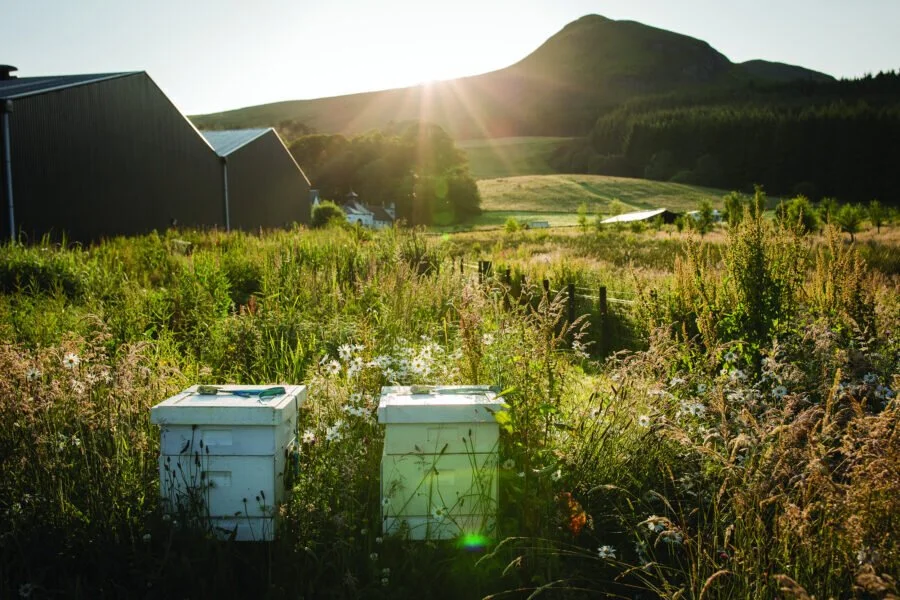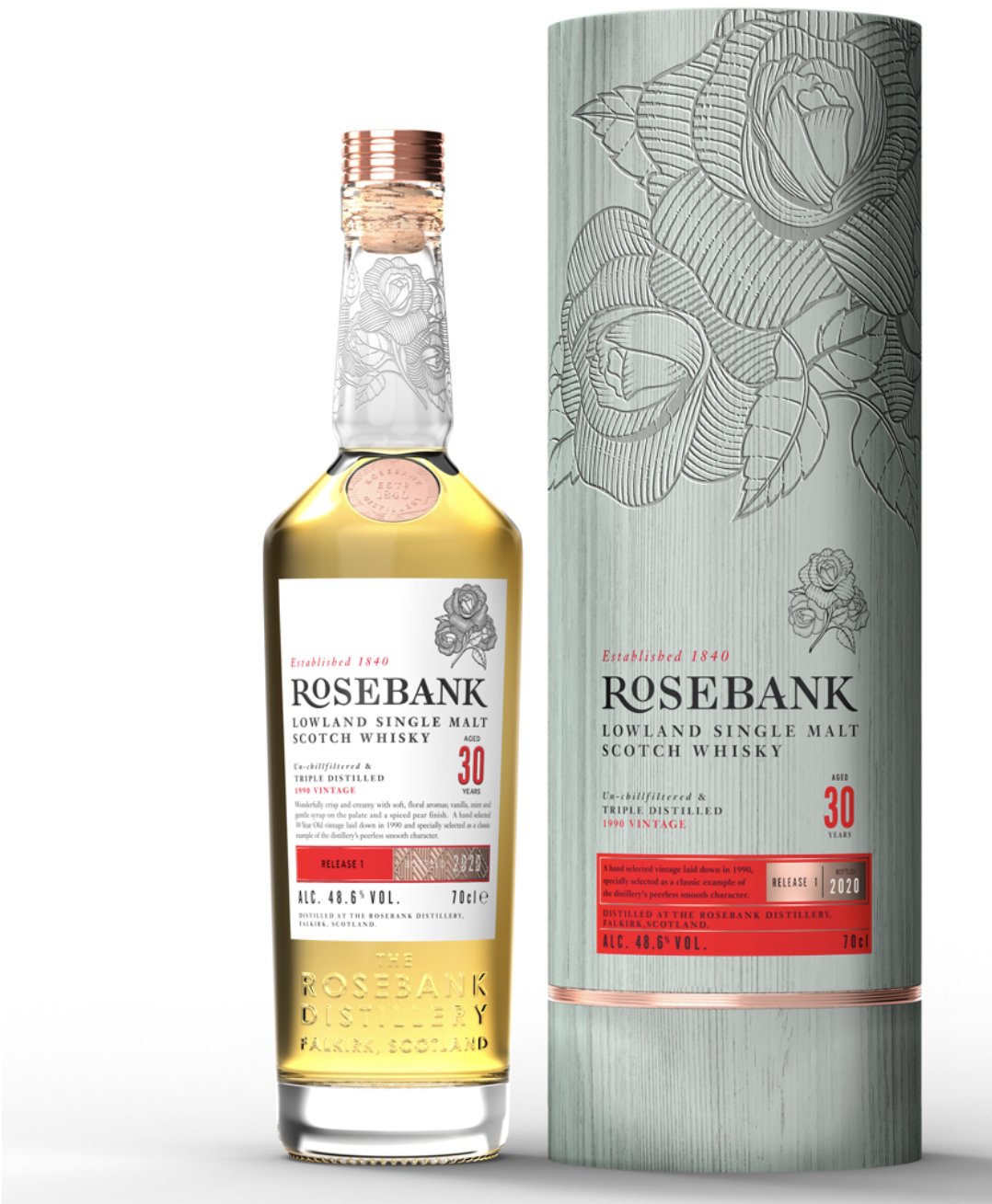Rosebank reborn
When I first started getting serious about single malt whisky, I was 28 years old and I was told by my various mentors at the time to buy as many bottles as I could afford from three distilleries in particular: Port Ellen, Brora, and Rosebank.
Back then, the prices for these silent distilleries were nothing to sneeze at, but they were a fraction of what you see on the market today.
If you’re new to single malt yourself, the reason this divine trinity drew—and continues to draw—such fanfare is because up until very recently these distilleries had been closed for many decades; Port Ellen and Brora shutdown in 1983, and Rosebank a decade later.
Of all the ghost whiskies still available in bottle, Port Ellen was the most coveted by far. It’s a peated Islay malt, to start, and for years it was the first building you saw when approaching the island (now most ferries dock at Port Askaig by Caol Ila), which created legions of new fans. Given the demand for Ardbeg and Lagavulin at the time, Port Ellen was like Stitzel-Weller Bourbon.
Brora was the clear insider favorite. The critical darling. Delicate and nuanced, it wasn’t the loudest voice in the room. It wouldn’t immediately wow you, or jump out of the glass the way that Port Ellen did, but once you got to know Brora there was no turning back. That waxy, lemony viscosity was unparalleled by any other malt.
Rosebank always played third fiddle to Port Ellen and Brora, much in the same way that Wild Turkey is outshined by the consumer love for Buffalo Trace and Heaven Hill today. But for the true whiskey diehards, the Kickin’ Chicken is still tops on many a list out there. The same holds true for Rosebank.
In order to learn about single malt back then, you still had to read books. There weren’t thousands of blogs and social media posts like there are today, documenting every nuance of every bottle ever produced. If you wanted to learn about Scotch, you turned to Michael Jackson.
I absolutely devoured Michael Jackson’s Whisky: The Definitive World Guide from the moment I procured my copy. The way he wrote about whisky, as well as the distilleries he recommended, greatly shaped how I viewed the single malt landscape at the time, and guided me to the adoration I still keep for certain producers today.
Michael Jackson loved Rosebank. After its closure in 1993, he lamented: “If there was a God, Rosebank would be produced again.”
Sadly, Michael passed away in 2007 and was never able to see the rebirth of Rosebank, but it’s clear he spoke to the big man upstairs and pulled a few strings on our behalf. In 2017, the long-mothballed distillery was purchased by Ian Macleod—owners of GlenGoyne and Tamdhu distilleries—and a plan to restore Rosebank to its former glory was hatched.
I remember the first time I went out drinking in Glasgow, walking through the cold Finnieston streets with Michael Jackson’s words running through my head:
“Some great whisky pubs exist in Glasgow, and are well worth visiting for a tasting session. It is in places such as these that the seeker of those elusive Lowlanders will have the most success. The whiskey they are most likely to be looking for is the finest of all—Rosebank.”
Now to the question you’re likely asking yourself: If Rosebank is so amazing, why would Diageo decide to close one of its greatest distilleries? The answer is as uninspiring as the ultimate decision itself. It was about marketing rather than quality; tourism, more specifically.
When putting together its classic malt range, Diageo had to choose between its two core Lowlanders: Rosebank or Glenkinchie. According to Jackson: “Most people in the firm would have chosen Rosebank, but in marketing, image is all; Rosebank sat next to a disused canal and bridged a busy main road, while Glenkinchie lay in a pretty farmland, with more tourist appeal.”
Soon after, Diageo decided one Lowland distillery was more than enough, and the distillery was shut down for good.
Having had my fair share of Rosebank over the years, including the upcoming thirty year old release from new owners Ian Macleod (who bought back the remaining original stocks), I’m here to answer another burning question: What exactly makes Rosebank so good?
In one word: drinkability.
To elaborate on that, Rosebank’s beauty is similar to that of an old Midleton Irish Whiskey: its soft, fruity, golden-grained character warming your palate, passing supple on its way across your tongue, and leaving your taste buds with hedonistic notes of sweet barley, buttery biscuits, heather, and vanilla. It’s the ultimate session whisky; an elixir perfectly suited to the Glasgow pub experience I aspired to so many years ago. It’s Scotland in a bottle. It is the liquid essence of what makes drinking Scotch whisky so much fun.
Are there plenty of other, less-expensive, similarly-flavored whiskies on the market that won’t cost thousands of dollars for a single bottle? Of course, there are.
But they’re not Rosebank.
And given how little Rosebank is left on the market right now, those few remaining experiences come at a premium. It’s no different than a Rolling Stones concert in 2021. Mick Jagger only has so many shows left in him, so if you want a chance to experience the magic before it’s gone forever, now’s the time.
Granted, there will be more Rosebank in the future, but I might very well be dead before it hits 30 years again.
-David Driscoll


